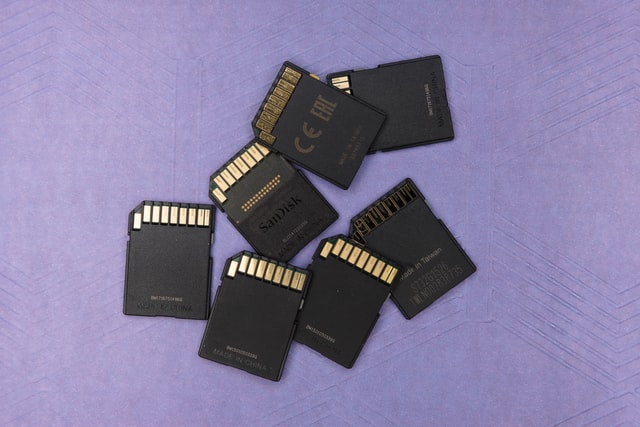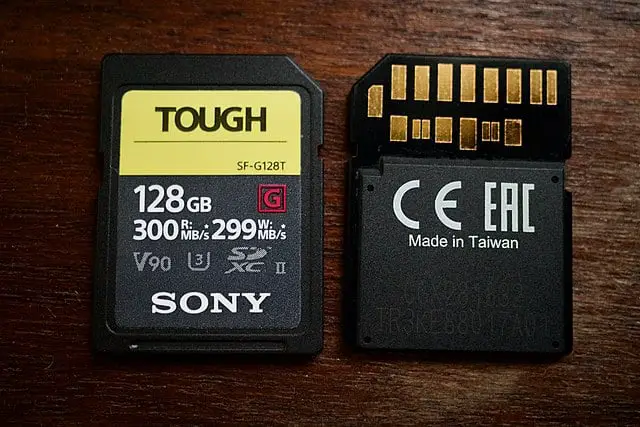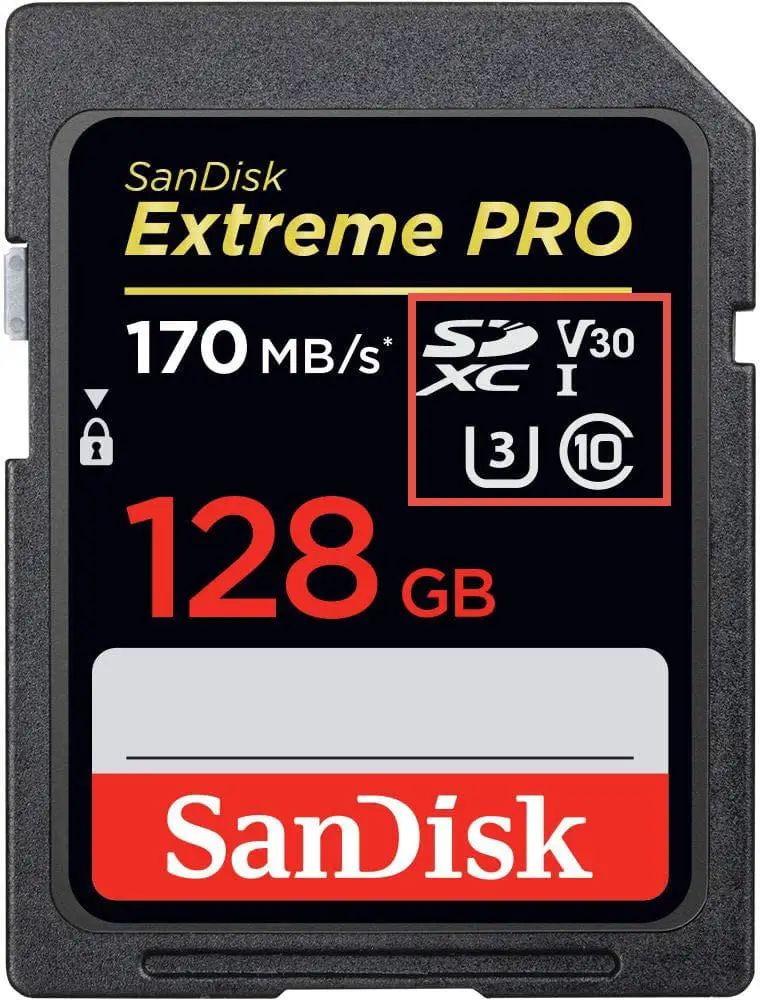When you are in the market for a memory card whether for photography or for devices like a Nintendo Switch, you will come across both U3 SD cards and U1 cards. These terms are not self-explanatory and you might reasonably ask, “What is the difference between U1 and U3 SD cards?”
The difference between an SD or micro SD U1 vs U3 memory card is strictly only seen in differing minimum sequential write speeds, with this originally being developed to show cards that can safely be used to record 4K video.
What is a U1 SD Card?
The U1 speed class means that a card can record at a minimum write speed of 10MB/s.
What is a U3 SD Card?
U3 means that the SD card has a U3 speed class, which means the card can record data at 30MB/s at a minimum.

But you can see from the image above that the symbols on an SD card, such as those referring to the SD card speed class, are not straightforward, so I will cover the key differences you should look out for.
If you want to see the differences between U3 vs U1 in real-world practice, then take a look at the Sandisk U1 vs U3 article.
U3 vs U1: UHS Bus and UHS Speed Class
When comparing U3 vs U1 cards, the first thing you should be aware of is that UHS bus is not the same as UHS speed class.
UHS Bus
UHS bus type is the Roman numeral seen on the front of the card. (In the example above, this is beneath the V30).
UHS Bus is either UHS-I, UHS-II or UHS-III with maximum theoretical transfer rates of 170MB/s, 312MB/s and 624MB/s respectively, but strictly this refers to the clock speed of the card and not the transfer rate.
This is achieved by having extra pins, with UHS-II and UHS-III both having an extra row of these connectors, as seen below.


Credit: Wikimedia Commons
So, when comparing UHS-1 vs UHS-3, UHS-3 is theoretically about four times faster than UHS-1, but only in a device that supports the extra pins.
UHS Speed Class
UHS speed class is the number (either 1 or 3) seen inside a U on the front of the card. This is what most people refer to when talking about U1 or U3.
A U3 SD card, U1 micro SD card or vice versa can both have either a UHS bus type of UHS-I, UHS-II or UHS-III, as these are separate speed measures.
U1 memory cards (also called ‘Class 1’ just to make this even more confusing!) are defined as having a minimum sequential write speed of 10MB/s, while U3 cards (‘Class 3’) having a minimum sequential write speed of 30MB/s, as seen in the table below.
| Minimum Sequential Writing Speed | UHS Speed Class |
| 10MB/s |  |
| 30MB/s |  |
Therefore, U3 cards are about three times faster than U1 cards.
Other SD Card or Micro SD Card Speed Ratings
In addition to the UHS speed class, which is now the preferred option for determining how fast a memory card is, there is also the older original Speed Class and the Video Speed Class.
The original Speed Class is the number (either 2, 4, 6 or 10) inside a C. The number refers to the minimum sequential write speed, so that Class 10 cards have a minimum sequential write speed of 10MB/s.
The original Speed Class shows the same information as the UHS Speed Class, so can safely be ignored.
The Video Speed Class is a number (either 6, 10, 30, 60 or 90) preceded by a V. The number again shows the minimum sequential write speed, so that V10 cards also have a minimum sequential write speed of 10MB/s, as below.
The Video Speed Class shows additional speed information beyond the UHS speed class, but is really only useful if you are shooting 8K video.
| Minimum Sequential Writing Speed | Video Class | Supports Up to: |
| 6MB/s |  |
4K video |
| 10MB/s |  |
4K Video |
| 30MB/s |  |
8K Video |
| 60MB/s |  |
8K Video |
| 90MB/s |  |
8K Video |
Capacity
There is no theoretical difference between the maximum capacity that can be produced for U1 vs U3 cards, but in practice, you are likely to find higher capacity cards for the U3 designation, as these have faster data transfer speeds and so are better able to utilize a higher capacity.
Personally, I prefer smaller cards though (at around a maximum of 128GB), as this increases your resilience in case of card failure, but you can easily calculate the best memory card size for you.
U1 vs U3 SD Card: SD Card Ratings
As an example, lets circle back to the SD card shown at the top of this article and explain what each of the symbols mean, using what we have learned.

In this case, the SD card (this also applies to any micro SD card) shows:
- An original Speed Class of 10 (C10), meaning a minimum sequential write speed of 10MB/s
- A Video Speed Class of 30 (V30), which supersedes C10 above, and means a minimum sequential write speed of 30MB/s
- A UHS Bus Type of UHS-I (I), which means this card has only one set of pins
- A UHS Speed Class of 3 (U3), which means this card has a minimum sequential write speed of 30MB/s
What’s the Difference Between Class 10 vs UHS 1?
Class 10 refers to the original Speed Class and means that a memory card has a minimum sequential write speed of at least 10MB/s. UHS 1 means that the SD card has a bus type with one set of pins and a theoretical maximum transfer speed of 170MB/s, but this does not tell you about the actual transfer speed, unlike the Class 10 designation.
What’s the Difference Between U3 vs Class 10?
U3 means that the memory card has a UHS Speed Class of 3, and therefore the card has a minimum sequential write speed of 30MB/s. Class 10 means that the card has an original Speed Class of 10 and that a memory card has a minimum sequential write speed of at least 10MB/s. This is obviously therefore irrelevant, with the Class 10 designation being superseded by the U3 designation.
Is U1 or U3 Better?
U3 is better than U1 as it means that the micro SD card or SD card has a minimum sequential write speed of 30MB/s for U3, but only 10MB/s for U1.
Read More:





![[SOLVED] How to Turn On Vizio TV Without Remote](https://www.lapseoftheshutter.com/wp-content/uploads/2022/04/how-to-turn-on-vizio-tv-without-remote-340x226.jpg)
Leave a Reply